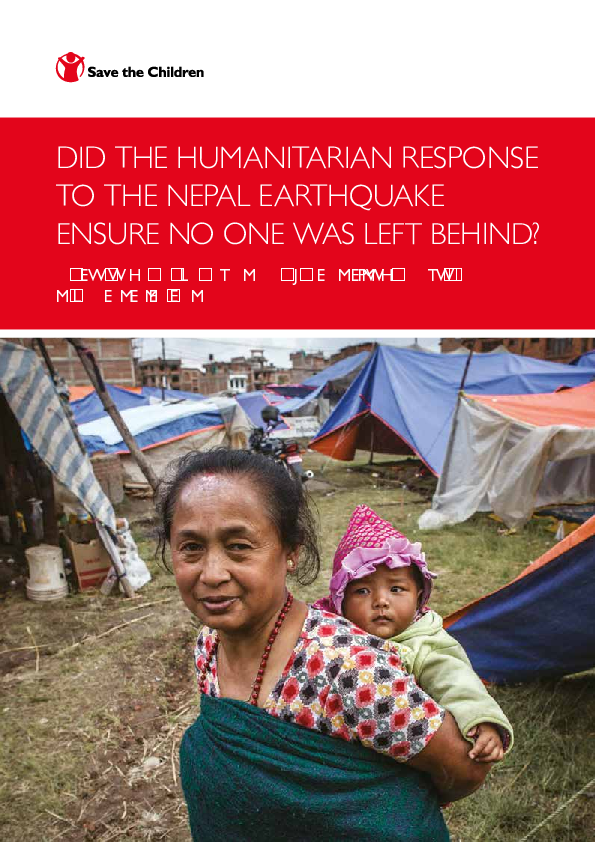
Reports
Did the Humanitarian Response to the Nepal Earthquake Ensure No One Was Left Behind?
Publication year:
2016
English
Format:
Publisher:
Save the Children
In April and May 2015, two large-scale earthquakes struck Nepal, killing almost 9,000 people, damaging over half a million houses and displacing hundreds of thousands of people from their homes.
Natural hazards are indiscriminate: earthquakes have no regard for social hierarchy, gender, age, disability, religion, ethnicity, or caste. But the impacts of natural hazards – and the humanitarian response to them – can easily discriminate against the very people who are most in need. When a disaster hits, vulnerable and marginalised groups have fewer and more fragile livelihoods options, less access to social and economic resources, less ability to influence the relief effort, and face more barriers accessing assistance – often without the political voice that would enable them to advocate for those barriers to be addressed. Unless these challenges are purposefully addressed as part of the relief effort, humanitarian crises can exacerbate and entrench social disadvantage, with the risk that already marginalised people will be left even further behind. This report uses the response to the Nepal earthquake as a case study through which to examine this risk.
The lessons learned from the earthquake response come at a time of significant opportunity. At the national level, the reconstruction process has just begun, the international humanitarian community is continuing its roll out of the ERP Package, and new disaster management legislation is in process. At the international level, humanitarian actors are thinking through how best to use the World Humanitarian Summit to improve humanitarian action for vulnerable and marginalised groups.
This report seeks to leverage the lessons learned from the earthquake and make recommendations aimed at ensuring an equitable and inclusive reconstruction process, that preparedness work under taken in Nepal now enables a more inclusive and equitable disaster response in the future, and that new developments in the international humanitarian system enable more effective and targeted humanitarian action for the world’s most vulnerable and marginalised people.
Read full abstract
Authors
View & Download
Document information
Publisher
Authors
Format
Content type
Country
Region
Rights
© Author/Publisher
Found a mistake? Help us improve!
If you have noticed a document assigned to the wrong author or any other inaccuracies, let us know! Your feedback helps us keep our data accurate and useful for everyone.
Share
Link
